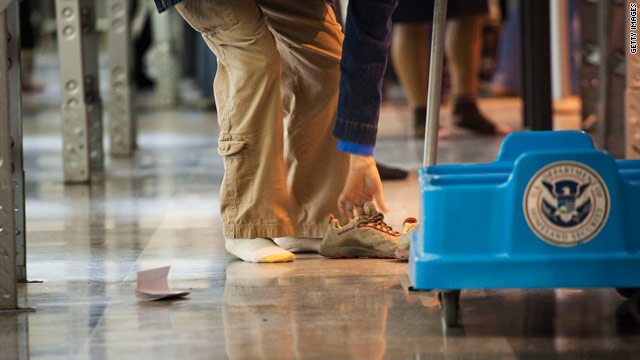TSA to phase in new pat-down procedures at airports nationwide

- The move is to help detect hidden items, TSA says
- CNN employee complains of invasive pat-down, lack of communication
- Pat-downs are only used after an initial alarm is triggered, TSA says
Washington (CNN) -- Airline passengers can expect to see as well as feel new pat-down procedures at U.S. airports over the coming weeks in an effort to provide another layer of security for travelers, the Transportation Security Administration said Thursday.
"Pat-downs are one important tool to help TSA detect hidden and dangerous items such as explosives," according to a TSA statement sent to CNN.
The TSA said passengers should continue to expect "an unpredictable mix of security layers that include explosives trace detection, advanced imaging technology, canine teams, among others."
But it's the hands-on procedures that have at least one traveler concerned that the TSA may be going too far.
Rosemary Fitzpatrick, a CNN employee, said she was subjected to a pat-down at the Orlando, Florida, airport on Wednesday night after her underwire bra set off a magnetometer. She said she was taken to a private area and searched, with transportation screening officers telling her the pat-down was a new procedure.
According to Fitzpatrick, a female screener ran her hands around her breasts, over her stomach, buttocks and her inner thighs, and briefly touched her crotch.
"I felt helpless, I felt violated, and I felt humiliated," Fitzpatrick said, adding that she was reduced to tears at the checkpoint. She particularly objected to the fact that travelers were not warned about the new procedures.
Fitzpatrick sent an e-mail complaint about her experience to the TSA that said the agency needs to get the word out so that travelers know their rights.
The TSA employees "conducted themselves in a professional manner, so my complaint is not about them professionally," Fitzpatrick wrote.
She told the TSA the agency needs to get the word out so the travelers know their rights.
"I am appalled and disgusted at the new search procedures and the fact that passengers have not been made aware of the new invasive steps prior to entering the security area," Fitzpatrick wrote. "It appears once you enter the security area, passengers forfeit their rights. There were no signs, video information, etc. at the entrance of the security area the airport. Why?"
She added: "As an experienced traveler for work who was in tears for most of the search process, I have never experienced a more traumatic and invasive travel event!"
The TSA sent an automated initial e-mail response to Fitzpatrick saying, "Thank you for your inquiry to the Transportation Security Administration. We have forwarded your e-mail to the appropriate group for response."
In its statement to CNN, the TSA said: "Pat-down procedures are used to resolve alarms that occur at a walk-through metal detector, if an anomaly is detected during screening with advanced imaging technology or during random screening."
The statement also indicated that "passengers who opt out of advanced imaging technology screening will receive alternate screening to include a thorough pat-down."
CNN's Jeanne Meserve and Carol Cratty contributed to this story.
